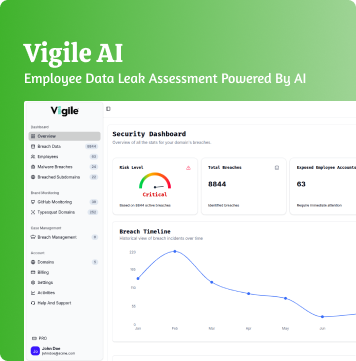
If you’ve ever asked yourself, “How often should we scan the dark web for our company’s credentials?”, congratulations, you’re already ahead of most organizations.
The reality is that cybercriminals aren’t waiting for your next security audit. They’re constantly trading and updating stolen data, meaning a single missed week can expose your organization to credential-based attacks.
So, how often should dark web scanning actually happen? Let’s break it down.
The Evolving Nature of Credential Exposure
Every time there’s a new data breach, password reuse, or phishing campaign, there’s a chance your company’s credentials could be compromised. Those details: emails, passwords, tokens often end up for sale or exchange on dark web marketplaces within hours.
That’s why credential exposure checks can’t be a one-time task. Cybercriminals don’t operate on schedules, so your security monitoring shouldn’t either.
The Short Answer: Continuously
The best dark web monitoring frequency is simple continuous.
Security isn’t static. New breaches occur daily, and leaked credentials circulate fast. Continuous or real-time monitoring gives your team immediate visibility when your domain, employees, or systems show up in new dumps or hacker forums.
With continuous dark web scanning, you can:
- Detect credential leaks before they’re exploited.
- Reset compromised accounts immediately.
- Strengthen your defenses and patch vulnerable entry points.
Think of it like smoke detection, you don’t test for fire once a month; you keep the alarm on 24/7.
If Continuous Monitoring Isn’t Possible
Not every organization has the resources for full-time dark web monitoring, but that doesn’t mean you should ignore it.
At a minimum:
- Run credential exposure checks monthly to detect emerging threats.
- After major breaches, run ad-hoc scans to verify whether your domains or employees were affected.
- Integrate breach detection with your existing security stack (SIEM, threat intel, or identity management systems) to automate alerts.
For high-risk sectors like finance, healthcare, or SaaS where credentials are prime targets; weekly monitoring is highly recommended.
How to Make Dark Web Monitoring Effective
Monitoring is only half the battle; action is what matters. Once exposed credentials are detected:
- Enforce password resets and MFA.
- Review access logs for unusual activity.
- Educate employees about phishing and password reuse.
- Conduct penetration tests to validate whether leaked data can be weaponized.
Combining these steps with dark web scanning builds a proactive defense that catches threats long before attackers do.
Stay Ahead, Stay Secure
The dark web doesn’t sleep, and neither should your defenses. Whether through continuous scanning or regular monthly reviews, credential exposure checks are no longer optional they’re essential for modern cyber hygiene.
That’s where Vigile.AI helps. Our AI-powered cybersecurity platform continuously monitors for leaked credentials, detects real-world threats, and empowers organizations to close security gaps before attacker’s strike.
Start proactive dark web monitoring today with Vigile.AI and keep your business one step ahead.



